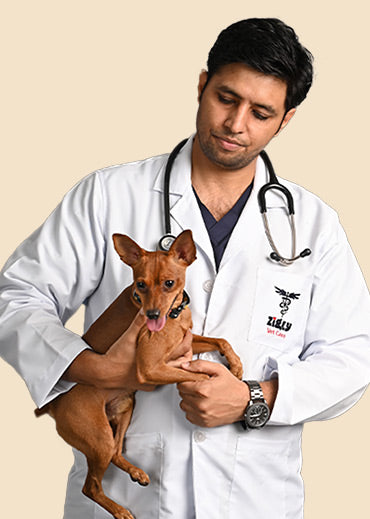Being a pet parent is a beautiful journey but it’s not without questions, especially when it comes to your pet’s health. Between wagging tails and purring cuddles, there are also appointments, vaccinations, and vet visits that can sometimes feel overwhelming. What exactly happens at the clinic? Is every test necessary? And how do you know what your pet truly needs?
Navigating Your Pet’s Health Journey with Confidence
Understanding the most common veterinary procedures not only helps ease your anxiety but also empowers you to make informed decisions for your pet’s well-being. Here’s a simple yet detailed look at seven essential vet procedures that most pets will encounter during their lives and why each one matters.
1. Vaccinations: The First Line of Defence
Vaccinations are one of the most basic and most important ways to protect your pet from serious diseases. From rabies and parvovirus in dogs to feline herpesvirus in cats, vaccines are designed to prevent illnesses that are often life-threatening or contagious. Most pets begin their vaccination schedule when they’re just a few weeks old, and follow-up boosters are given throughout life depending on age, risk, and lifestyle. While it may feel like a routine jab, each one plays a crucial role in your pet’s long-term health and public safety.
2. Spaying and Neutering: Beyond Birth Control
While many associate spaying and neutering with population control, the benefits go much deeper. These surgical procedures help prevent certain cancers and reduce behavioral issues such as aggression, marking, and excessive roaming. In females, spaying eliminates the risk of uterine infections and ovarian tumors; in males, neutering lowers the chance of testicular cancer and prostate issues. Most vets recommend the surgery around six months of age, though this can vary. It’s a one-time procedure that can significantly enhance your pet’s quality of life.
3. Dental Cleaning: A Hidden Essential
Dental hygiene often goes unnoticed until your pet develops bad breath or difficulty eating. Dental cleaning is a preventive procedure carried out under anesthesia, where vets remove plaque and tartar buildup and check for gum disease or broken teeth. Poor dental health can lead to infections that travel through the bloodstream and affect vital organs. While daily brushing is ideal, professional cleaning once a year is crucial, especially for smaller breeds or older pets prone to dental issues. A clean mouth doesn’t just mean fresher kisses, it means a healthier pet overall.
4. Blood Tests and Lab Work: Seeing the Unseen
Just like with humans, blood tests help vets assess what’s happening inside your pet’s body. From checking liver and kidney function to detecting infections, hormonal imbalances, or anemia, these tests are an essential diagnostic tool. Blood work is often recommended before surgery, during annual exams (especially for senior pets), or when your vet suspects something isn’t quite right. While the results may look like a series of numbers to you, to your vet, they’re a map that can guide timely intervention.
5. X-Rays and Ultrasounds: A Deeper Look Inside
Imaging technology plays a key role in modern veterinary medicine. X-rays are used to detect fractures, joint issues, or swallowed objects, while ultrasounds give a clearer picture of soft tissues and internal organs like the heart, liver, and kidneys. These procedures are safe, non-invasive, and often critical in diagnosing conditions that can’t be seen externally. Whether it’s confirming a pregnancy or identifying a tumour, imaging helps vets make accurate, confident decisions for your pet’s care.
6. Deworming and Parasite Control: Not Just a Seasonal Fix
Parasites might be tiny, but their impact can be massive. Worms, ticks, and fleas can cause everything from skin irritation and vomiting to serious internal damage and disease transmission. Deworming is typically started in puppies and kittens as early as two weeks of age, with regular follow-ups recommended throughout life. Tick and flea preventives should be part of your pet’s monthly routine, not just during warmer months. A small pill or topical solution today can save your pet from immense discomfort or worse tomorrow.
7. Microchipping: A Small Step with a Big Impact
Losing a pet is every pet parent’s nightmare. Microchipping offers a safety net, one that can bring a lost pet back home. The chip, implanted just under the skin, carries a unique ID number that links to your contact information. It’s a quick, nearly painless procedure that can be done during a routine visit or while your pet is being spayed or neutered. Unlike collars or tags that can fall off, a microchip is permanent and reliable. If your pet ever wanders too far, this small chip could be their ticket home.
Conclusion
When you understand what your pet goes through at the vet, it shifts your perspective. These procedures aren’t just appointments to tick off, they’re investments in a longer, healthier, and happier life for your companion. You’ll not only feel more confident navigating your pet’s health journey, but you’ll also be better equipped to recognize when something’s not right.
At Zigly Vetcare, we believe that great care starts with great understanding. That’s why our veterinary services are built not just around expertise, but around transparency and empathy. From regular checkups to advanced diagnostics, every service at Zigly is designed with your pet’s comfort and your peace of mind in mind. Book a visit at your nearest Zigly Vetcare centre because informed care is the best kind of care.




